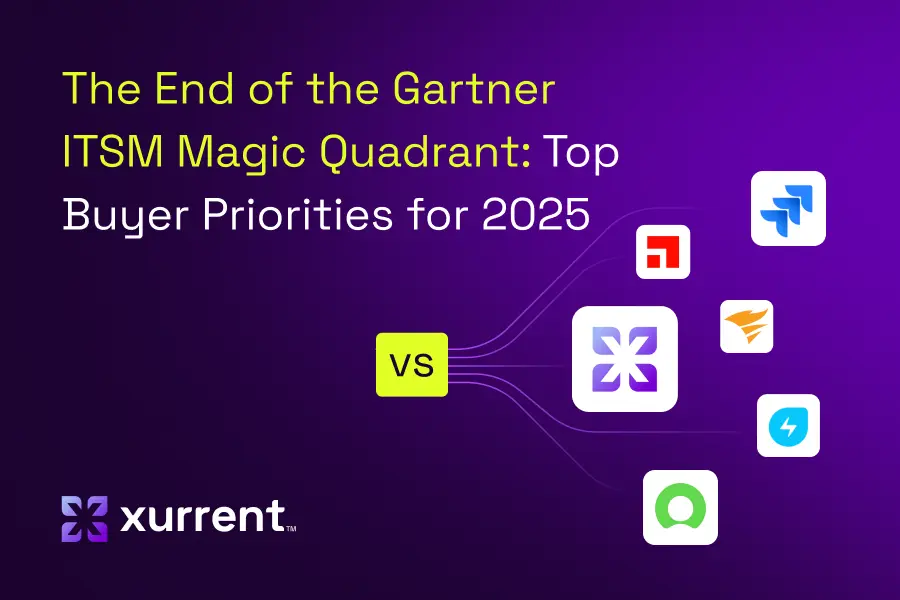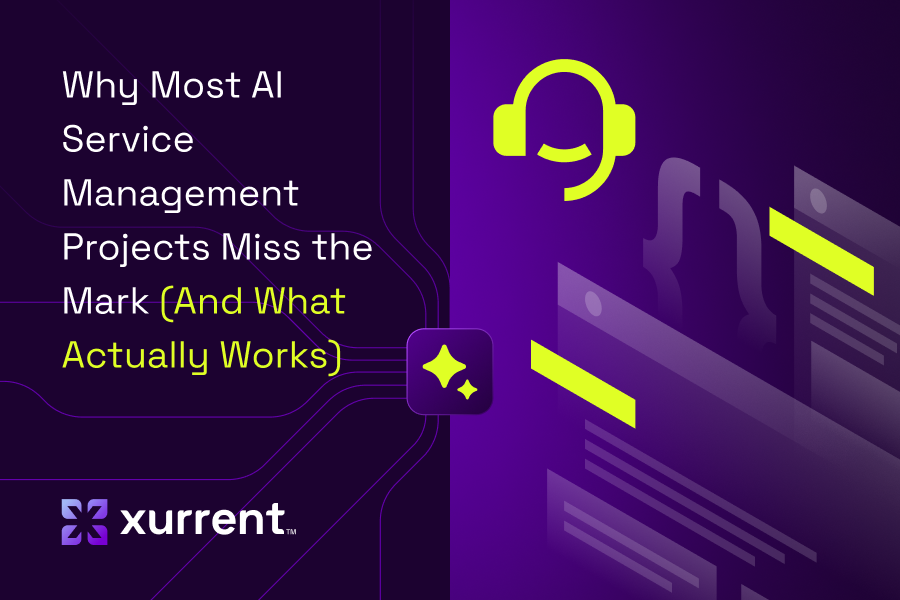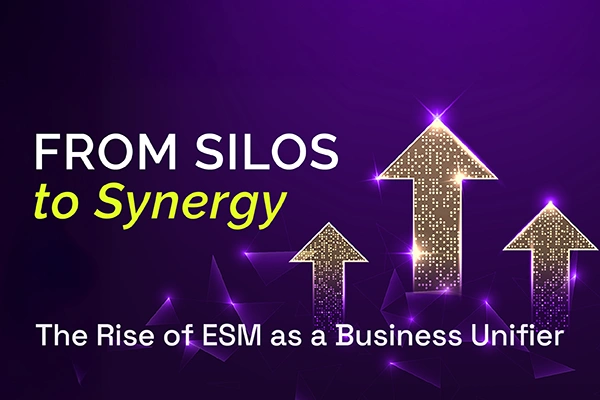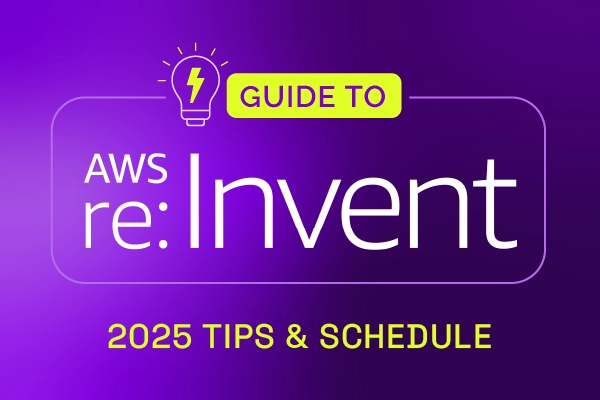From chaos to clarity: Why integrated ITSM and ESM is no longer optional

Process is a double-edged sword.
Too much: productivity is stifled.
Too little: the odds of a “chaotic mess” increase exponentially.
To complicate the issue a bit more, every organization is different, requiring similar but unique processes.
Historically, IT teams have utilized frameworks like ITIL, combined with ITSM software, to manage these processes. More recently, teams outside of core IT have recognized the value in using the same type of tooling to manage their processes (often referred to as workflows) — also known as ESM (Enterprise Service Management).
So why are non-IT teams adopting the same Service Management tooling as IT uses? Error reduction + improved productivity + better customer service.
As this Software Oasis report shared, “Automating workflows reduces errors by up to 70%, which improves productivity and even nudges customer satisfaction scores upward (by ~7%).”
ESM solutions enable all teams across an organization to collaborate and work in the same system, thus reducing the no-longer-sustainable siloed service systems. Integration is now a business imperative.
As this Axelos and ITSM.tools survey found, “two-thirds of organizations (67.6%) currently have enterprise service management strategies in flight. 37.5%, i.e. over half of these organizations, were considered to be well advanced with their strategy – this is up from just 7% in 2019.”
The old way is breaking down
For years, ITSM did its job brilliantly – but only within IT’s four walls. In its own silo, IT could rely on structured processes and a trackable ticketing system to keep chaos at bay, resolving issues with consistency and speed.
But, on the other side of those four IT walls, other teams were still handling requests via a combination of email threads, spreadsheets, and “water cooler” conversations. While improvised methods can be effective sometimes, without ITSM’s automated workflows and alerts, non-IT departments often operate blindly with little accountability or insight into their performance.
Over time, gaps began to form, then widen. Business leaders started to ask, “What good was a smooth IT service desk if HR, Facilities, or Legal were still mired in bottlenecks? The broader organization began pushing for change, realizing that siloed service systems were no longer sustainable.
The above created a perfect storm that turned extending ITSM beyond IT from a tech initiative into a business imperative.
This pivot was inevitable.
Today, departments such as HR, Facilities, and Legal all expect the same streamlined, trackable, speedy service that IT provides. Why? All teams share the same end users as IT and ultimately face the same high expectations. Today’s employees are so conditioned by their consumer-world experiences that they expect convenient self-service and fast turnaround from all departments. HR and other functions have watched IT deliver this modern service experience, and they want to be part of the action.
The message is clear:
Siloed support → out.
A unified service platform for all teams → IN.
By sharing ITSM’s proven workflow automation company-wide, businesses ensure every internal service — from onboarding a new hire to fixing a broken window — is delivered with the same efficiency and transparency. Ultimately, this enterprise-wide approach isn’t just about speed; it’s about creating a culture where all teams work in sync, speaking a common service language and meeting the business’s need for integrated, high-quality service delivery.
For good or bad, as more teams adopt service management practices, cracks in the old way of working become harder to ignore. What used to be “good enough” when IT operated alone now creates real problems when multiple departments try to collaborate. The biggest culprit is siloed tools, which create:
🚧Friction in cross-functional service delivery
🔀Inconsistent user experiences
💤Missed opportunities for automation and insight
The case for integrated Enterprise Service Management
The fix is simple, once everyone is playing on the same field. That’s the power of integrated Enterprise Service Management.
Here’s how:
First, you get a unified service experience. Instead of switching between portals or sending emails into the void, create a single place to go for all service requests. Whether it's a software installation, a parking pass, or a leave of absence request, the experience remains consistent.
One portal.
One process.
One set of expectations.
Next comes speed. When departments share data and workflows, requests move more efficiently. HR does not have to wait on IT. Legal can see what has already been approved. Everyone involved gets the right context at the right time — cutting delays, reducing confusion, and creating a smoother process for employees.
Integration also improves accountability. Service teams know who owns what. SLAs are tracked. Progress is visible. There is less back-and-forth and no confusion about who is responsible for follow-up.
Finally, there is scalable automation. Instead of building new workflows from scratch for each department, teams can reuse proven processes and shared knowledge. Automation handles the routine stuff, freeing up people to focus on more valuable work. What starts in IT can be extended across the entire business.
Tangible benefits for the business
Integrated ITSM and ESM is more than just a boost for service teams. It delivers real, measurable value across the entire business. When every department works from the same system, organizations move faster, make smarter decisions, and create better experiences for employees.
Some of the most impactful benefits companies are seeing include:
Operational Efficiency
Integrating ITSM and ESM directly translates into leaner operations.
A single, unified platform — one that consolidates multiple ticketing systems and manual workflows — helps organizations eliminate redundant tools and steps, ultimately saving time and effort.
Why? Teams no longer have to “swivel-chair” between different apps for IT, HR, or facilities requests, resulting in faster incident resolution and less duplicate work. The payoff is tangible: one industry survey found that 75% of organizations reported higher productivity after extending service management practices beyond just IT. Fewer systems to maintain and streamline processes also reduce costs, allowing staff to focus on value-adding work instead of administrative busywork.
“We now have complete visibility … customer experience has dramatically improved, providing us with complete control of service quality and cost. We can see how services perform, which create value for us, and which ones need improvement. This will result in a lot of future time and cost savings.” — Eda Takbak Şahin, PMO & Process Improvement Director @ Acun Medya
Better Insights
An integrated ESM approach provides business leaders with a comprehensive view of service operations across departments.
With all request and fulfillment data in one place, spotting trends is easier, identifying bottlenecks is faster, and making informed decisions based on real evidence rather than gut feel becomes straightforward. In fact, Forrester notes that having all operations on a single platform yields “better reporting [and] improved insights,” as well as a clearer understanding of how value flows through different teams. Instead of data being trapped in departmental silos, managers get end-to-end analytics.
The result: a more data-driven organization, where continuous improvement is fueled by comprehensive, cross-departmental metrics rather than anecdotal snapshots.
“Everything is so easy to see in Xurrent; you don’t usually have this much transparency. I really like the real‑time reporting and dashboards… I am now able to keep control of service cost and quality, and see if services can be optimized.” — Roman Hautermans, Service Level Manager @ Zentis
Employee Satisfaction
Bringing enterprise services under one roof also means a smoother, faster experience for employees who need help.
Gone is the confusion over where to go for what. Password resets. HR policy info. It does not matter — the request process is consistent and user-friendly.
That ease of use reduces frustration and waiting time, which in turn boosts morale. When an issue that used to take a week of back-and-forth is now resolved in a day via a single, intuitive portal, employees feel the difference.
“User satisfaction is excellent at 96%… Over 5,000 happy people all at the same time.” — Mike Rossi, Senior IT Manager @ Fiskars
Security and Compliance
A less obvious but critical benefit of an integrated ITSM/ESM platform is strengthened governance.
It’s far easier to see who did what (and when) with all service requests and changes tracked in a centralized system. This also provides a handy built-in audit trail for every action.
Transparency at this level is gold for compliance and security teams.
Instead of chasing down logs from separate department tools (or worrying that something has fallen through the cracks), auditors can pull reports from a single source that show adherence to processes, approvals, and policy checks. This, in turn, reduces the risk of shadow IT or unsanctioned workarounds because everything flows through the same governed pipeline. Given that 62% of organizations admit they need to further automate compliance and audit prep workflows to meet regulatory standards, having a single system of record is a huge step in the right direction.
How Xurrent makes it all happen … with ease
So what does all of this look like in practice? Xurrent makes integrated service management feel less like a heavy lift and more like a natural evolution of how your teams already work. In short, Xurrent is easy.
It starts with real-time synchronization. Whether a request is coming from IT, HR, or Facilities, the data flows instantly across teams. Everyone stays in sync without having to hop between tools or wait for status updates.
Xurrent also comes with pre-built workflows (blueprints) for common service functions, such as HR onboarding, finance approvals, and facilities requests. That means your teams can hit the ground running with processes that are ready to go but flexible enough to tweak as needed.
With role-based visibility and a unified service catalog, employees know exactly where to go and what they’re allowed to access. Service teams see only what’s relevant to their work, which keeps things clean, focused, and secure.
And when it comes to adapting to change, Xurrent has you covered. AI-driven automation and no-code customization make it easy to evolve your processes as your business grows. You can streamline repetitive tasks, introduce new workflows, and fine-tune the experience — all without writing a single line of code.
Integrated ITSM and ESM is here
Integrated ITSM and ESM is no longer a future goal — its a mission-critical requirement for modern organizations.
Teams that continue working in silos risk falling behind in productivity, employee satisfaction, and operational resilience. Xurrent gives you the tools to bring it all together in one platform, without the usual complexity.
Get started today and see how simple true service integration can be.


Xurrent named a Market Leader in Research In Action’s Vendor Selection Matrix™ for IT & Enterprise Service Management Solutions
Xurrent earns #1 rankings in customer satisfaction, price vs value, and recommendation index in Research In Action's global ITSM/ESM Vendor Selection Matrix report.




